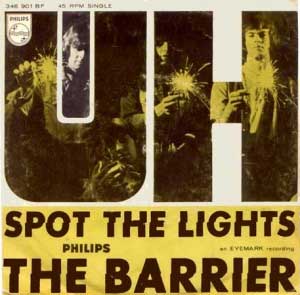 The Barrier hailed from Fulham in South London and were originally known as The Purple Barrier, shortening their name in response to pressure from the management of Deep Purple (then a pop psych outfit themselves rather than the heavy rock behemoths they would become in the 1970s).
The Barrier hailed from Fulham in South London and were originally known as The Purple Barrier, shortening their name in response to pressure from the management of Deep Purple (then a pop psych outfit themselves rather than the heavy rock behemoths they would become in the 1970s).
‘Uh! / Spot The Lights’ was The Barrier’s third single and appeared on the Philips label in December 1968 (in the UK in a plain sleeve, though it was also issued in the Netherlands in the picture sleeve shown). Despite the rather uninspiring title, ‘Uh!’ is in fact a very enjoyable slice of commercial pop psych / mod beat with a spiky guitar break and a few of the titular grunts thrown in for good measure.
But it is on the flip that the group really hits their stride. A discordant piano intro immediately grabs the attention and quickly gives way to pummeling drums (that hardly let up for the rest of the song) and driving fuzz guitar, underpinning a very melodic, catchy vocal line with simple but effective lyrics about a night out in the centre of town.
‘Uh!’
‘Spot The Lights’
‘Dawn Breaks Through’, the b-side of The Barrier’s debut single on the independent Eyemark label is also essential to check out – it is another high octane pop psych gem, unfortunately buried on the flip of the very forgettable ‘Georgie Brown’. It had initially been slated to appear with another song, the excellent ‘Shapes and Sounds’, but this 45 never proceeded beyond the acetate stage (though you can now hear the lost a-side on Incredible Sound Show Stories Volume 1 or on a 45 issued by Top Sounds in 2013 which also includes a demo version of ‘Dawn Breaks Through’).
A second 45 ‘The Tide is Turning / A Place In Your Heart’ was recorded by session men while the band were touring overseas.
A brief clip exists of the group, part of Philips’ New Faces of 1969 promotional film that also showcased the likes of The Open Mind, Ambrose Slade and Procession.
Reissues: Both sides of the single are on Rare 60’s Beat Treasures Volume 4; ‘Spot The Lights’ is on Rubble Volume 17 and English Freakbeat Volume 3.
Discography
- Georgie Brown / Dawn Breaks Through (Eyemark, 1968)
- The Tide Is Turning / A Place In Your Heart (Philips, 1968)
- Uh! / Spot The Lights (Philips, 1968)

 The Answers from South Shields in the North East of England were responsible for a bona fide freakbeat classic in ‘It’s Just a Fear’, the a-side of their debut single released on the Columbia label in February 1966 (promotional copies give the song title as ‘Just a Fear’, stock copies as the full ‘It’s Just a Fear’).
The Answers from South Shields in the North East of England were responsible for a bona fide freakbeat classic in ‘It’s Just a Fear’, the a-side of their debut single released on the Columbia label in February 1966 (promotional copies give the song title as ‘Just a Fear’, stock copies as the full ‘It’s Just a Fear’).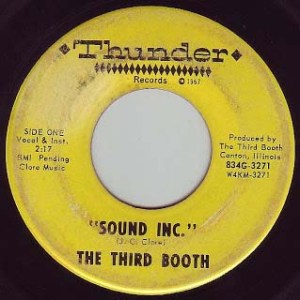 The Third Booth were from Canton, Illinois. They had previously been known as The What Four but changed name as they used to meet after school at the third booth of the soda fountain at the Lewis Pharmacy. This version of the band split up without making any recordings but main man J.C. Clore put together a new line-up to cut the outfit’s lone single.
The Third Booth were from Canton, Illinois. They had previously been known as The What Four but changed name as they used to meet after school at the third booth of the soda fountain at the Lewis Pharmacy. This version of the band split up without making any recordings but main man J.C. Clore put together a new line-up to cut the outfit’s lone single.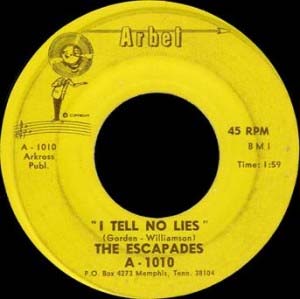 The Escapades from Memphis, Tennessee were formed in late 1965 by singer Tommy Minga after he had been forced out of another local band The Jesters (who later released a 45 on Sun Records, ‘Cadillac Man’ credited to Minga though in fact written by their guitarist Teddy Paige).
The Escapades from Memphis, Tennessee were formed in late 1965 by singer Tommy Minga after he had been forced out of another local band The Jesters (who later released a 45 on Sun Records, ‘Cadillac Man’ credited to Minga though in fact written by their guitarist Teddy Paige). If I had to pick a song that epitomises the youthful exuberance of 60s teen garage in all its glory then it might well be the anthemic ‘Abba’, a-side of the only single from Charlotte, North Carolina’s The Paragons.
If I had to pick a song that epitomises the youthful exuberance of 60s teen garage in all its glory then it might well be the anthemic ‘Abba’, a-side of the only single from Charlotte, North Carolina’s The Paragons.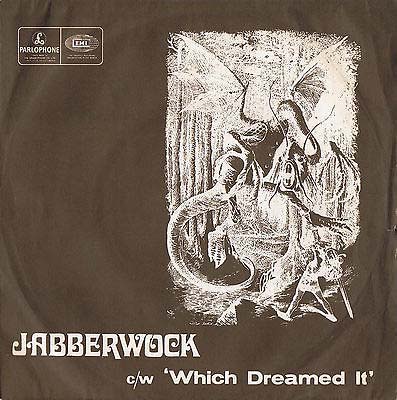 This prime slice of Carnaby Street-style UK psychedelia appeared on the Parlophone label in May 1968. The a-side brilliantly sets Lewis Carroll’s famous nonsense poem ‘Jabberwocky’ from Through The Looking Glass, the follow-up to Alice’s Adventures In Wonderland, with a musical backdrop full of strange sound effects and bursts of sitar, keyboards, and fuzzy guitar.
This prime slice of Carnaby Street-style UK psychedelia appeared on the Parlophone label in May 1968. The a-side brilliantly sets Lewis Carroll’s famous nonsense poem ‘Jabberwocky’ from Through The Looking Glass, the follow-up to Alice’s Adventures In Wonderland, with a musical backdrop full of strange sound effects and bursts of sitar, keyboards, and fuzzy guitar.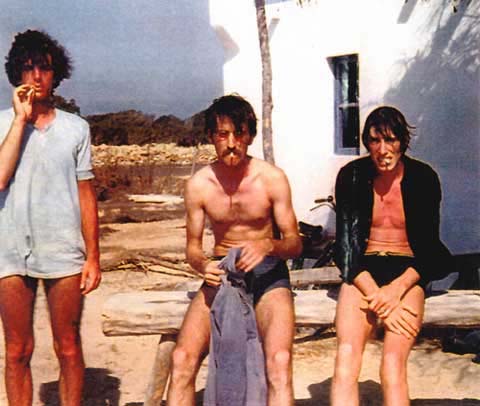 In 1969 Hutt joined a general practice aimed at young people in London’s Ladbroke Grove founded by Dr. Ian Dunbar, which among other things used tincture of cannabis (then legal to prescribe) instead of methadone to help recovering heroin addicts.
In 1969 Hutt joined a general practice aimed at young people in London’s Ladbroke Grove founded by Dr. Ian Dunbar, which among other things used tincture of cannabis (then legal to prescribe) instead of methadone to help recovering heroin addicts.
 With its driving fuzz guitar riff, swirling keyboards, and breezy vocal delivery, ‘Left Behind’ by The Black Watch is the sound of a band embracing the psychedelic sound of the Summer of Love, though the slightly primitive but very entertaining fuzzy solo shows their garage roots.
With its driving fuzz guitar riff, swirling keyboards, and breezy vocal delivery, ‘Left Behind’ by The Black Watch is the sound of a band embracing the psychedelic sound of the Summer of Love, though the slightly primitive but very entertaining fuzzy solo shows their garage roots.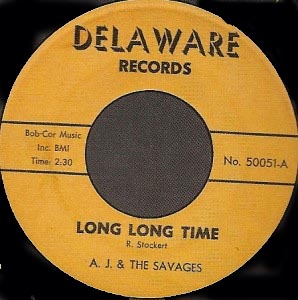 A.J. and The Savages are another of those bands about which very little is known, apart from that they hailed from Chicago, Illinois and released one single in March 1967 on the Delaware label (also home to The Delights’ excellent ‘Long Green / Find Me a Woman’ 45 from 1965).
A.J. and The Savages are another of those bands about which very little is known, apart from that they hailed from Chicago, Illinois and released one single in March 1967 on the Delaware label (also home to The Delights’ excellent ‘Long Green / Find Me a Woman’ 45 from 1965).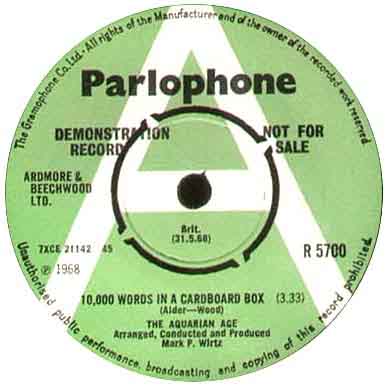 This 45 appeared on the Parlophone label in May 1968 and was recorded by two members of the recently defunct band Tomorrow. Drummer John ‘Twink’ Alder and bassist John ‘Junior’ Wood were joined on the single by Clem Cattini on drums and Nicky Hopkins on piano. The 45 was arranged and produced by Mark Wirtz (the mastermind behind the uncompleted A Teenage Opera project, which only yielded a couple of singles at the time), who had worked with Tomorrow on their self-titled album released in February 1968, an essential artifact in any collection of UK psychedelia.
This 45 appeared on the Parlophone label in May 1968 and was recorded by two members of the recently defunct band Tomorrow. Drummer John ‘Twink’ Alder and bassist John ‘Junior’ Wood were joined on the single by Clem Cattini on drums and Nicky Hopkins on piano. The 45 was arranged and produced by Mark Wirtz (the mastermind behind the uncompleted A Teenage Opera project, which only yielded a couple of singles at the time), who had worked with Tomorrow on their self-titled album released in February 1968, an essential artifact in any collection of UK psychedelia.